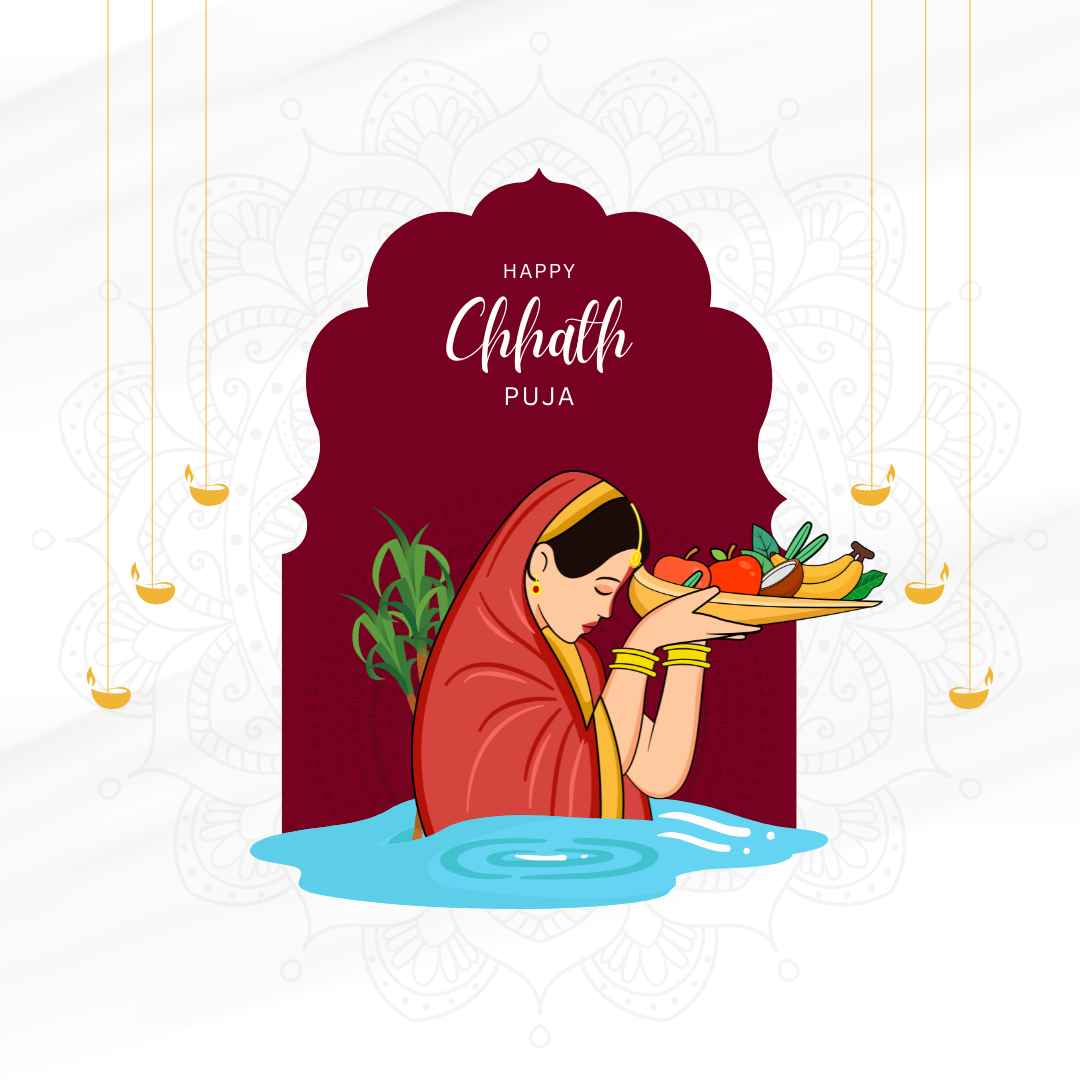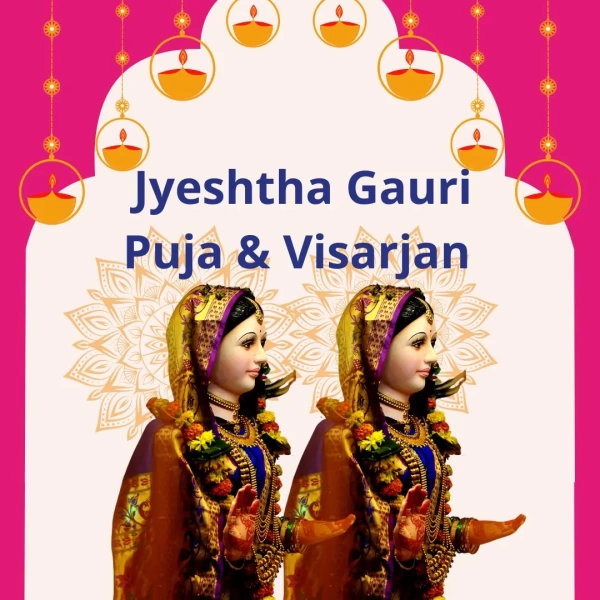Chhath Puja 2025 will be celebrated from October 25th to October 28th. The most significant rituals—Surya Arghya—are performed during sunrise and sunset at the end of October. This festival, rooted in the Kartik month overlap of October–November, honors the Sun God (Surya) and Chhathi Maiya. It weaves together ancient Vedic traditions, environmental stewardship, and communal devotion. Readers are encouraged to explore related Kartik month festivals and Surya worship in previous blog posts. This will provide a deeper understanding.
Also read- Festival in October 2025: Complete List of Hindu Festivals
Origins and Cultural Context
Chhath Puja is primarily celebrated in Bihar, Jharkhand, Uttar Pradesh, and Nepal. However, its influence now spans across India and beyond. The origins trace back to the Rigveda and stories of Draupadi and Karna. It symbolizes gratitude, discipline, and devotion to nature.
- It comes 6 days after Diwali. It marks the Shashti tithi of Kartik Shukla Paksha, making it a key festival of the lunar Kartik month.
- Chhathi Maiya is venerated as the Goddess of fertility and protection. Surya symbolizes energy, health, and life.
Read about – Valmiki Jayanti 2025: Life & Teachings of Maharishi Valmiki
Rituals Across Four Days
Chhath Puja spans four days, each marked by rigorous, meaningful rituals designed to purify body and soul.
Nahay Khay (Day 1: October 25, 2025)
- The festival begins with a holy bath, followed by preparation and consumption of a pure meal. The meal typically includes bottle gourd, rice, and lentils cooked in earthen pots.
- The meal is taken once, signaling physical and spiritual purification.
Kharna (Day 2: October 26, 2025)
- Devotees observe a strict nirjala vrat (waterless fast) from sunrise to moonrise.
- Evening prasad (kheer, roti, bananas) is offered to Chhathi Maiya, followed by initiation of a 36-hour fast.
Sandhya Arghya (Day 3: October 27, 2025)
- The most iconic ritual: as the sun sets, devotees stand in rivers or ponds and offer arghya (libations). They use bamboo soops filled with thekua, fruits, and other offerings.
- Folk songs and prayers fill the air as entire communities gather on riverbanks.
Usha Arghya (Day 4: October 28, 2025)
- Before sunrise, another arghya is offered to the rising sun. This marks the end of the fast and sharing prasad as an act of gratitude and healing.
Read about – Skanda Sashti 2025: Murugan Puja Vidhi & Significance
Significance and Symbolism
Chhath Puja emphasizes the interdependence of humans and nature, focusing on detoxification, spiritual discipline, and solar rhythm.
- Worshippers seek well-being, family prosperity, and protection—especially of children—believing Sun’s energy brings healing, abundance, and fulfillment of vows.
- Devotees highlight environmental consciousness by using only natural products in their rituals. They gather fresh fruits, bamboo baskets, and light earthen lamps, emphasizing purity and sustainability in every offering.
Surya Arghya: The Soul of Chhath
Surya Arghya, the offering to the Sun during evening (Sandhya) and morning (Usha), reflects the direct relationship between human life and solar cycles.
- Standing waist-deep in water, devotees face the sun. They hold soops filled with prasad and pour out water, symbolizing surrender and gratitude.
- The collective act of Surya worship is both a spiritual and ecological event. Millions unite to honor solar energy and water, reinforcing the significance of sustainable practices.
Read more about – Sankashti Chaturthi October 2025
Prasad and Festive Foods
Prasad is integral to Chhath rituals, with unique foods that hold deep symbolic meaning.
- Devotees prepare thekua (made with wheat flour, jaggery, and ghee), kheer (rice pudding sweetened with jaggery), sugarcane, coconut, and bananas. They cook all these foods without using common preservatives or additives, then distribute them as sacred offerings during the festival.
Community, Environment, and Social Change
Chhath Puja is more than a family observance—it’s a massive social event promoting environmental awareness, social identity, and inclusivity.
- Gatherings near rivers and lakes foster unity and mutual respect.
- Rituals encourage the preservation of water bodies, cleanliness, and sustainable festivals.
Read about – Masik Shivratri October 2025: Puja Vidhi & Night Fasting
Link to Kartik Month and Surya Worship
The festival’s timing in the Kartik month aligns it with other major Hindu festivals. These include Govardhan Puja, Tulsi Vivah, and more. Chhath Puja is the pinnacle of Surya worship. It offers a unique window into the reverence of solar energy in Indian culture. (See dedicated Surya worship blog and Kartik month festival guides for related insights.)
Spiritual Philosophy
- The rigorous fasting, abstention from water, and early morning prayers foster self-control and respect for natural cycles.
- Every act—bathing, singing folk songs, cooking prasad—echoes a deep-seated harmony between tradition and contemporary ecological sensibilities.
Read about – Mahalaya Amavasya 2025: Pitru Tarpan & Shraddha Rituals
Historical Legends and Vedic References
Ancient stories from the Rigveda attribute Chhath Puja’s origins to Draupadi’s penance and Karna’s devotion. These tales add layers of spiritual meaning and regional pride.
- She actively protects children, ensuring their health and longevity. According to ancient legends, she restored life to a stillborn child of King Priyavrata, blessing devotees with fertility and safeguarding offspring. Devotees invoke her during Chhath Puja to seek blessings for their children’s well-being and protection from harm. According to legends, she appeared to bless childless couples and became the divine protector invoked during Chhath Puja for the welfare and protection of progeny.
- These rituals celebrate motherhood, honor sunlight, and promote purification, making the festival timeless and universal.
Modern Celebrations: Urban and Global Reach
The festival has grown to urban centers across India and globally, maintaining its core while embracing new contexts.
- Eco-friendly celebrations, river cleanups, rooftop rituals, and civic engagement highlight a modern Chhath. It respects heritage and adapts to changing environments.
- Urban rivers and artificial ponds become centers of devotion, bringing together families, neighbors, and new generations.
Read about – Kojagari Lakshmi Puja 2025: Overnight Vigil & Wealth Rituals


